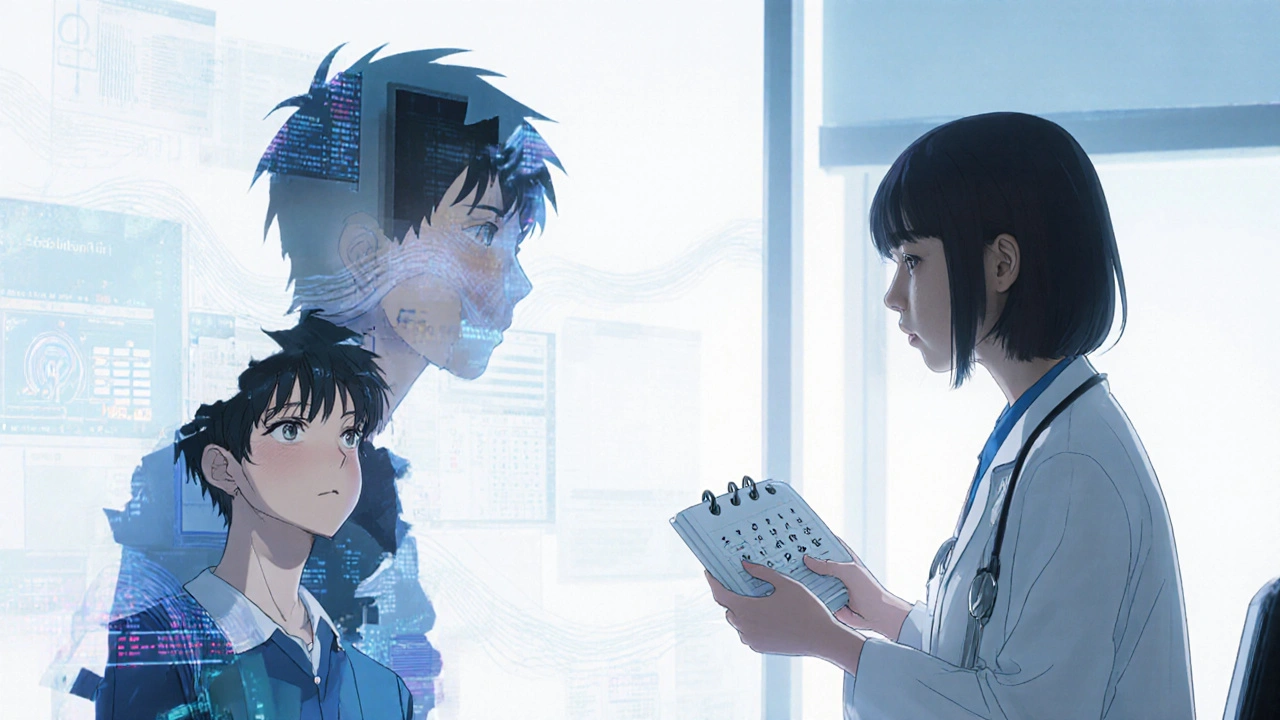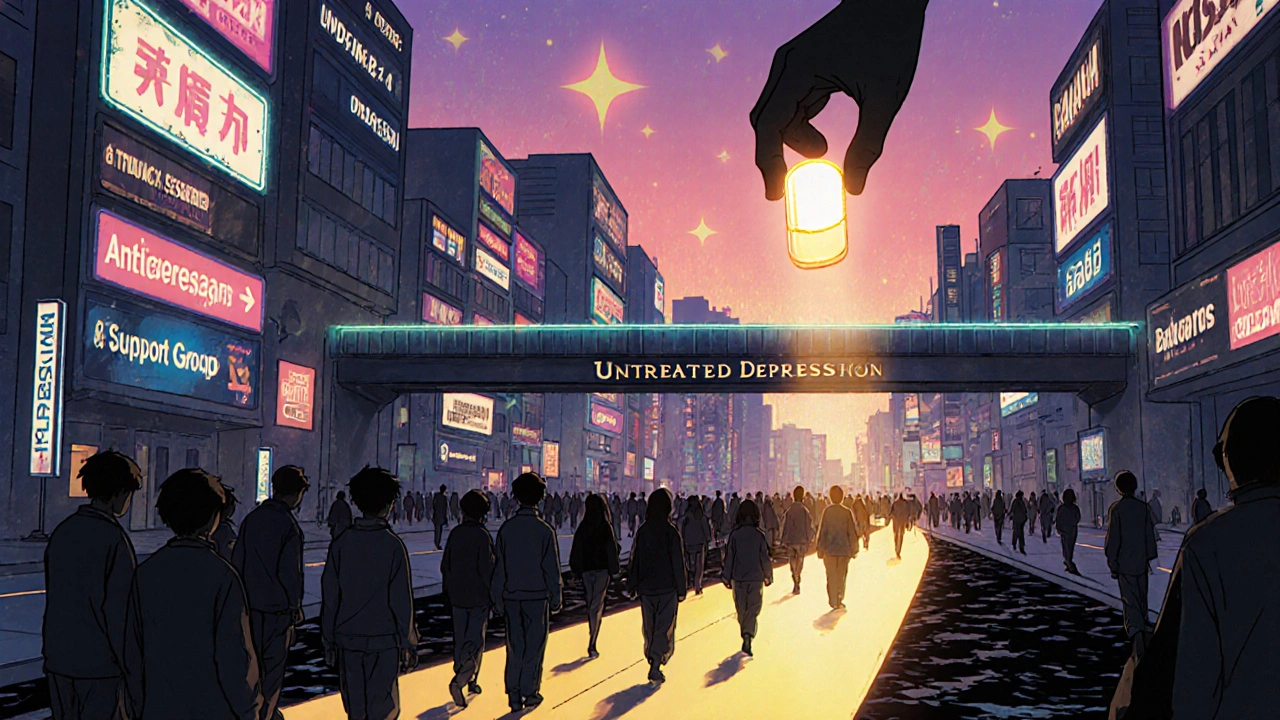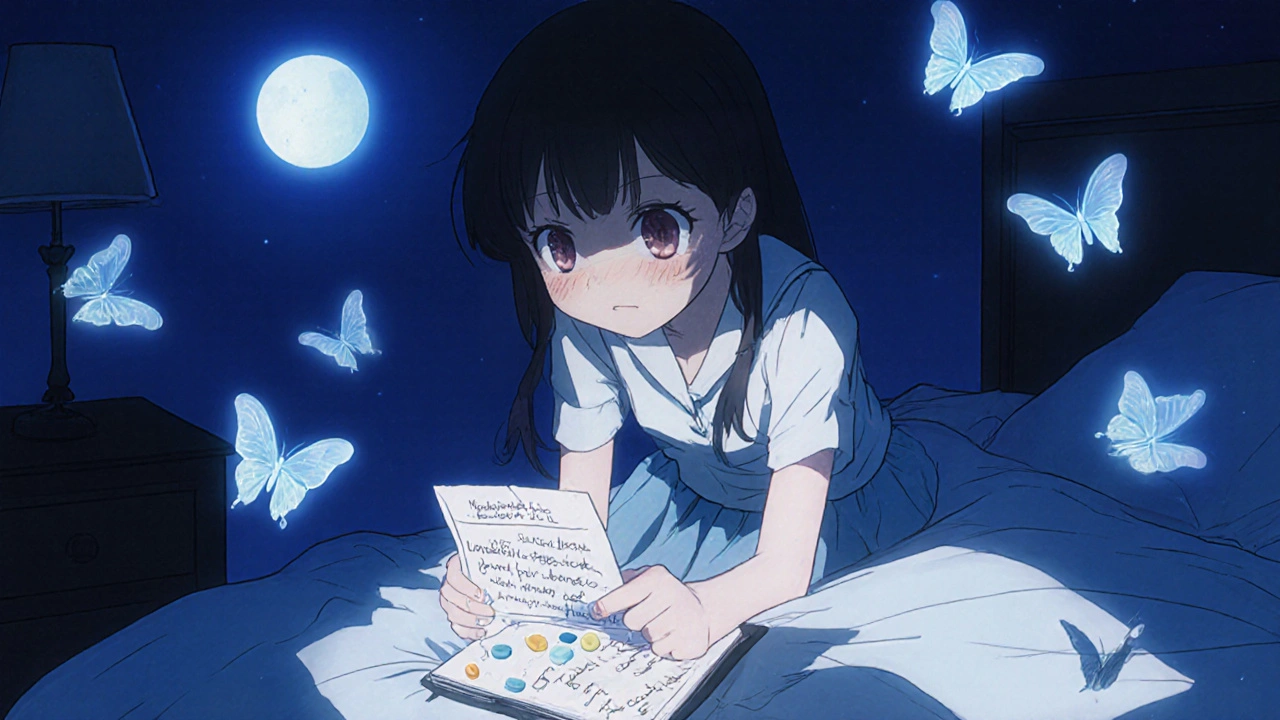Antidepressant Safety Risk Calculator
This tool helps assess your risk of experiencing suicidal thoughts when starting antidepressants based on the factors mentioned in the article. Your results will help you understand what to expect and how to stay safe during treatment.
Personal Information
Risk Factors
Your Safety Assessment
Recommended Safety Actions
When you start taking an antidepressant, you expect to feel better. But for some people-especially teens and young adults-something unexpected happens: thoughts of suicide pop up. It’s not common, but it’s real enough that the FDA put a black box warning on every antidepressant prescription in the U.S. This isn’t a small footnote. It’s the strongest safety alert the government can give a drug. And it’s caused more confusion than clarity.
What Is the Black Box Warning?
The FDA added the black box warning to antidepressants in 2004 after reviewing data from 24 clinical trials involving over 4,400 patients under age 25. The findings showed that kids and young adults taking antidepressants had about twice the risk of suicidal thoughts or behaviors compared to those on a placebo. No one died in these trials, but suicidal actions-like planning, making threats, or attempting self-harm-went up from 2% in the placebo group to 4% in the antidepressant group. The warning applies to all antidepressants, including SSRIs like fluoxetine (Prozac), sertraline (Zoloft), and escitalopram (Lexapro), as well as SNRIs like venlafaxine (Effexor) and others like bupropion (Wellbutrin). It doesn’t say these drugs cause suicide. It says they may increase the risk of suicidal thinking during the first few weeks of treatment-or when the dose changes. The warning appears in bold, boxed text at the very top of every prescription label. It’s impossible to miss. Along with it, patients get a printed Medication Guide that explains the risk in plain language. Pharmacies are required to hand it out. Doctors are expected to discuss it. But many patients still don’t understand what it means.Why Does This Happen?
It’s not that antidepressants make people want to die. It’s that they can wake up your energy before they lift your mood. Depression often drains you-no motivation, no movement, no will to act. When an antidepressant starts working, your energy returns before your sadness lifts. You might feel strong enough to act on thoughts you’ve had for months but were too exhausted to follow through on. That’s when the risk spikes: in the first 1 to 4 weeks of treatment, or after a dose increase. This isn’t unique to antidepressants. It’s why doctors tell you to watch for sudden changes in behavior-not just sadness, but agitation, restlessness, panic, or talking about death. It’s why they ask you to check in after two weeks, not six. It’s why family members are often asked to help monitor. For adults over 25, the data doesn’t show increased risk. In fact, for older adults, antidepressants reduce suicide risk. The warning only applies to those under 25 because that’s where the evidence was clear. But even within that group, not everyone is equally affected. Some drugs carry higher risk than others. Paroxetine, for example, showed a stronger link to suicidal behavior in studies than sertraline or fluoxetine.The Unintended Consequences
The warning was meant to save lives. But after it went into effect, something unexpected happened. Prescriptions for antidepressants in teens dropped by 22% between 2004 and 2006. Psychotherapy visits fell too. And then, suicide rates in young people went up-by nearly 15% in the first two years after the warning. A 2023 study in Health Affairs found that fewer prescriptions didn’t mean fewer deaths. It meant more people went untreated. More emergency room visits for drug overdoses. More teens dying by suicide because they didn’t get help. One study looked at two teenagers with severe depression who refused medication after reading the black box warning. Both later attempted suicide. Their doctors said the warning, while well-intentioned, scared them away from a treatment that could have saved their lives. The American Psychiatric Association says untreated depression is far more dangerous than antidepressants. About 15% of people with severe depression die by suicide. That’s 1 in 7. The risk from medication? Less than 1%.
Who’s at Highest Risk?
Not everyone under 25 is equally vulnerable. Certain factors raise the risk:- Starting antidepressants for the first time
- Increasing the dose
- Having a history of suicide attempts or self-harm
- Having bipolar disorder (not diagnosed yet)
- Family history of suicide or mental illness
- Being in crisis or under extreme stress when starting treatment
What Should You Do If You’re Starting Antidepressants?
If you or someone you love is beginning treatment, here’s what actually helps:- Don’t stop taking the medication because of fear. Stopping suddenly can make depression worse.
- Watch for warning signs in the first 4 weeks: increased agitation, insomnia, irritability, talking about death, giving away possessions, withdrawing completely.
- Have a safety plan with your doctor before you start. Know who to call at night. Keep emergency numbers handy.
- Ask for weekly check-ins during the first month. Most doctors will offer this, but you have to ask.
- Involve a trusted adult if you’re under 18. A parent, guardian, or close friend should know you’re on medication and how to spot trouble.
- Don’t assume the warning means the drug is unsafe. It means you need to be watched closely-not avoided.


Julia Strothers
This is all government propaganda to control the youth. Big Pharma paid off the FDA to keep this black box warning so parents panic and keep their kids on pills. The real suicide risk? The drugs themselves. They’re chemical brain scramblers. I’ve seen it-kids on SSRIs become zombies, then suddenly snap. They don’t need meds, they need discipline, church, and a good slap in the face. America’s turning into a nation of chemical zombies because we’re too lazy to raise kids right.
Nikhil Purohit
Hey, I'm from India and we don't have black box warnings here-but we do have tons of people struggling with depression and zero access to psychiatrists. I get the concern, but if you're too scared to take meds because of a warning, you're risking way more. My cousin was suicidal for 3 years, refused meds, then tried to jump off a bridge. After starting sertraline with weekly check-ins? He's working now, has a dog, and even cooks for his mom. The warning is real, but so is the hope. Don't let fear silence treatment.
Debanjan Banerjee
Let’s clarify the data: the 2% to 4% increase in suicidal ideation was observed in controlled clinical trials under medical supervision. The real danger lies in unsupervised use, abrupt discontinuation, or misdiagnosis (e.g., bipolar disorder mistaken as MDD). Paroxetine carries higher risk than fluoxetine-this is well-documented. The black box warning is not a ban-it’s a call for structured monitoring. Patients under 25 should have biweekly follow-ups, caregivers informed, and crisis plans in place. The 15% rise in youth suicides post-2004 wasn’t caused by antidepressants-it was caused by *avoiding* them. This isn’t anti-science fearmongering; it’s public health 101.
Michael Marrale
Wait… so you’re telling me the government doesn’t want us to know the *real* truth? 🤔 I did my own research-deep web stuff-and turns out antidepressants are linked to mind control tech via the water supply. They don’t want you to know that the black box is just a distraction so we don’t notice the microchips in the pills. Also, your doctor is probably a reptilian. 🦎 I know someone who stopped taking Lexapro and suddenly started seeing angels. Coincidence? I think not.
David vaughan
...I started sertraline last month... and honestly... I felt worse... for like... two weeks... I was crying... at 3 a.m.... thinking about ending it... but... I didn’t... I called my therapist... and... she told me... this is normal... and... I’m still here... and... I’m not alone... and... I’m not broken... just... adjusting... 🥲
Cooper Long
The black box warning is a necessary, if imperfect, instrument of informed consent. Its purpose is not to deter treatment but to ensure that the initiation of pharmacotherapy occurs within a framework of clinical vigilance. The data from the FDA meta-analyses are robust. The subsequent rise in youth suicides reflects a systemic failure of implementation-not a failure of the warning. Policy must evolve toward risk stratification, not abolition. We must treat depression as a medical condition, not a moral failing or a political battleground.
Sheldon Bazinga
LMAO the FDA is just a puppet of big pharma. They want you hooked on pills so you keep paying $200 a month for ‘Zoloft’ that’s just sugar and lies. My cousin took Prozac and turned into a robot who cried during TikTok ads. Then he got off it and became a monk. Now he meditates in the woods and eats berries. No pills. No problems. Wake up sheeple. The real cure? Sunlight, discipline, and stopping the corporate drugging of our youth.
Sandi Moon
One must ask: why does the United States, a nation with the most advanced pharmaceutical industry, rely on such a blunt instrument as a black box warning? In the UK, we employ a nuanced, tiered risk assessment system, supported by mandatory psychiatric follow-ups within 48 hours of initiation. The American approach is archaic, paternalistic, and ultimately counterproductive. The warning, while well-intentioned, has become a symbol of institutional incompetence. We do not warn drivers about the risk of car crashes-we enforce seatbelts, speed limits, and driver education. Why treat mental health differently?
Kartik Singhal
Look, I get it. The warning is scary. But let’s be real-most people who read it just skip to the bottom and think ‘this drug = death’. 🤦♂️ Meanwhile, the real issue? No one’s talking about how bad mental healthcare is in this country. You need a $300 copay just to see a shrink who barely looks at you. And now you’re supposed to trust a 20-year-old warning label instead of a system that actually supports you? 🤡 I’m not saying meds are magic. But banning them because of fear? That’s not safety. That’s negligence.